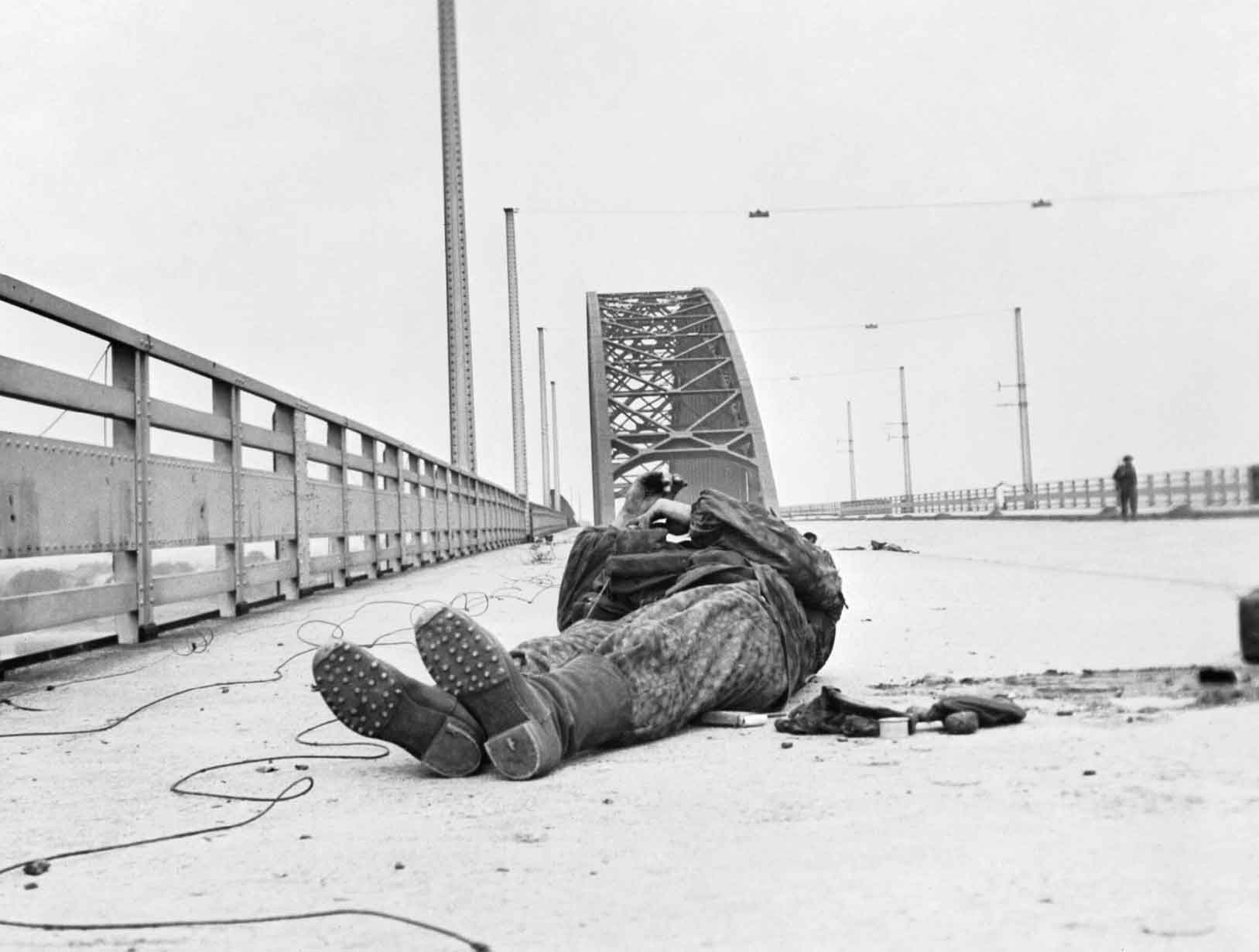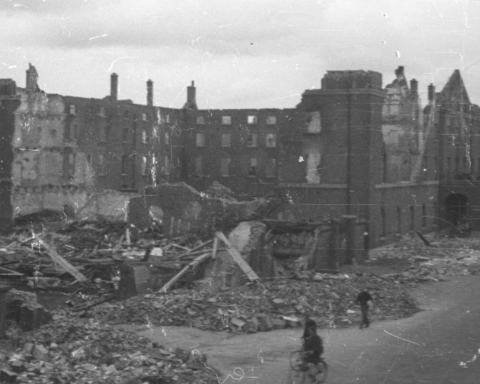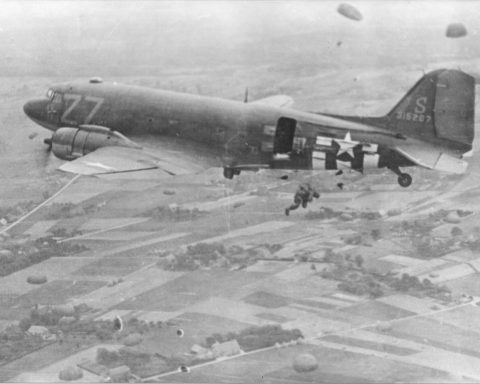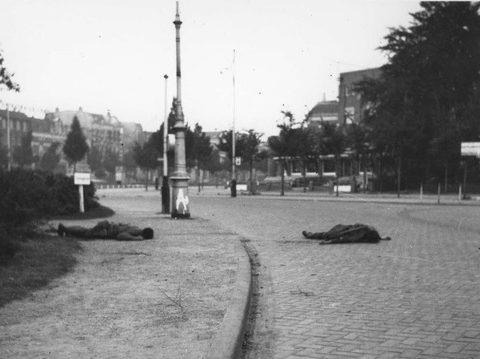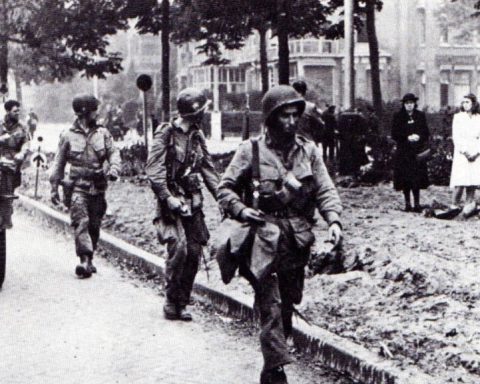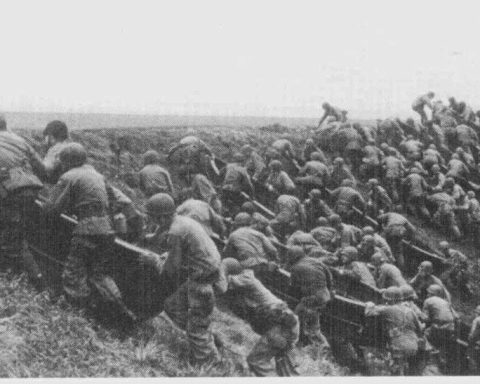In 26 canvas boats, 260 soldiers of the 504th Parachute Regiment crossed the Waal on Wednesday afternoon, September 20. Despite a smoke screen and covering fire from tanks and machine guns, there were many casualties. A total of 48 people were killed and many dozens were injured during the crossing.
Major Julian Cook had fewer than 200 soldiers left for part two of his assignment: capturing the north side of the railway bridge and the Waal Bridge. But Cook had no need to exhort his troops. After the bloody crossing, it was now pay back time .
Captain
Henry Keep: “Several times I have seen troops brought to the boiling point: troops who, for a brief lull in battle, rise above themselves, fanatics gone mad with rage and lust for murder, men who temporarily forget the meaning of fear . That is the moment when the great military feats in history take place and are commemorated with such splendor in our history books. It is an awe-inspiring sight, but not a pretty image.”
Before the Americans could focus on the railway bridge, an old Dutch fort had to be dealt with first. One of the soldiers swam across the moat around the fort and climbed up the wall. From his position atop the fort, he threw hand grenades into the air vents and loopholes he encountered. The grenades were thrown to him by his comrades on the other side of the moat.
At the same time, the fortress was also attacked through the main gate. Those in the fort quickly surrendered. An American journalist reported that 75 German bodies were thrown into the moat.
A group of American paratroopers encountered a group of about forty German soldiers on their way to the railway bridge. The Germans wanted to surrender, but the Americans shot the Germans on the spot.
From the south side of the Waal, an English tank commander commented about the American aggression: “I think those paratroopers are being fed raw meat.”
The Americans were unleashed. A platoon of Americans led by Captain Kappel reached the railway bridge from which Germans jumped in panic to escape the American fury. The Americans aimed the German machine guns on the north side of the railway bridge at the Germans who had jumped into the water.
Meanwhile, the railway bridge was also attacked from the south by American paratroopers, supported by British tanks. The Germans who were still on or near the bridge were killed.
“I saw old German men grabbing our M1s and begging for mercy,” said Corporal Jack Bommer in historian Antony Beevor’s book ‘Arnhem’. “They were shot at close range. That is war.”
A total of 267 German deaths were counted on the captured railway bridge.
On to the Waal Bridge
Meanwhile, some of the American paratroopers were on their way to the north side of the Waal Bridge. At that moment it was attacked from the south by British tanks and American troops. However, the German battalion with SS Panzergrenadiers initially managed to hold out.
However, the pressure from the Allies increased. After the paratroopers manage to destroy the Germans’ strategically placed 88 mm artillery and also disable three tanks, the Allies have free access to the bridge. In the meantime, at dusk, the German battalion had quietly sneaked away from the Valkhof.
Four British tanks were sent forward by the army leadership to cross the apparently undefended Waal Bridge. Four tanks drove carefully over the bridge. The British expected the bridge to be blown up by the Germans at any moment, but that did not happen.
When the leading tank was in the middle of the Waal Bridge, it was fired upon from the northeast side by a German 88 mm gun. The tank and the German exchanged several shots, without either being hit.
The four tanks made it to the other side of the bridge. There they shot at the soldiers present, until they realized that these were the American paratroopers who had also reached the north side of the bridge.
The four British tanks formed a defensive perimeter at Lent, to the astonishment of the Americans. They believed that the British should immediately drive to Arnhem to relieve the British at the Rhine Bridge. But the British refused. They had no orders to move on. Moreover, they considered it too dangerous to advance in the dark without the guidance of sufficient infantry.
The Americans accused the British of being cowardly. According to them, the road to Arnhem was open without any Germans.
Meanwhile, fighting continued on the Waal Bridge. Many German soldiers had climbed to the top of the bridge trusses. From that position they fired on the Allied soldiers. The Allies had a huge job to eliminate all German soldiers.
Meanwhile, the German General Harmel, who led the defense of Nijmegen, had informed General Bittrich that the Allies had captured the Waal Bridge. Harmel claimed after the war that he had pressed the detonator to blow up the bridge without being ordered to do so, but that nothing had happened.
That evening, British Field Marshal Montgomery informed General Eisenhower that he expected Market Garden to turn out as it should.
“The British airborne division in Arnhem has had a tough time, but their situation should improve now that we can move north from Nijmegen to support them. There is a reasonable chance that we will capture the bridge at Arnhem, which is currently in the hands of the Germans and still intact.”

